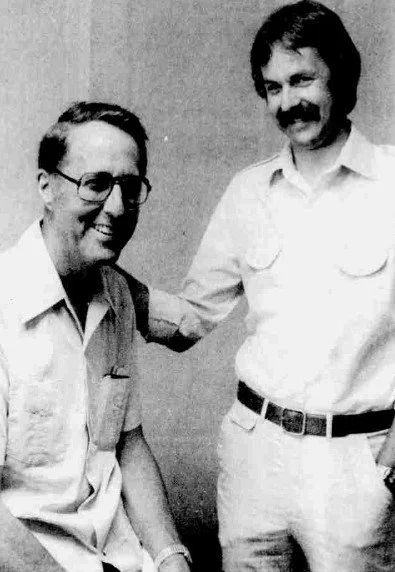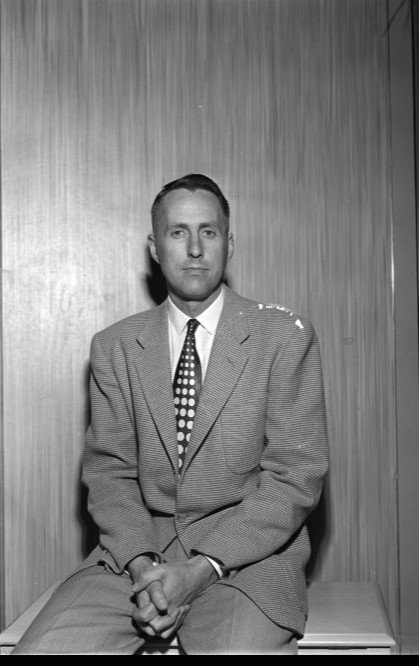From Dry Farms to Doctor's Office: The Legacy of Dr. Brasher in Kearns
Dr. Burton F. Brasher: A Founding Physician and Faithful Community Servant
For more than three decades, Dr. Burton Farnsworth Brasher was a steady and trusted presence in the west side communities of Kearns and West Valley City, helping to pioneer what many referred to as “Health Over Jordan.” At a time when there were no doctors west of State Street, Dr. Brasher helped bring full-time medical care to families who had previously gone without local access.
Born on March 18, 1921 in Delta, Utah,, Burton was raised with a strong sense of duty and service. He graduated from South High School in Salt Lake City, earned a B.A. in Business, and went on to receive his M.D. from the University of Utah College of Medicine. He married LaVerne Richardson in 1946 in the Salt Lake Temple, and together they shared a life of purpose, faith, and community service.
Dr. Brasher opened his medical practice in Kearns in 1954, and two years later co-founded the Kearns Medical Center with Dr. A. Willis Smith and Dr. J. Bernard Critchfield. He practiced family medicine in the area until his retirement in 1987, caring for generations of patients with compassion and skill.
4180 W 5415 South
His legacy of healing didn’t end with his retirement. His son, Dr. Craig Brasher, followed in his father’s footsteps, continuing the tradition of serving the west side community as a dedicated and trusted physician.
Dr. Burton Brasher’s service extended far beyond the clinic. A proud U.S. Army veteran, he served in World War II, the Korean Conflict, and the Berlin Crisis. He was Utah’s State Surgeon in the Utah National Guard, and the commanding officer of the 328th General Hospital at Fort Douglas in the Army Reserve.
A devout member of The Church of Jesus Christ of Latter-day Saints, Dr. Brasher held numerous leadership roles, including bishop, stake presidency, and stake high council. With his beloved wife LaVerne, he served four full-time missions, including one in Nigeria, and was a Sealer in the Jordan River Temple. He also served as chaplain at Philmont Scout Ranch and dedicated many years to youth service and employment support.
Dr. Brasher’s impact on youth extended to his tireless work with the Boy Scouts of America. He served on the Great Salt Lake Council Executive Board, was President of Area II, Western Region, and participated in four National Scout Jamborees and three World Scout Jamborees. He was honored with both the Silver Beaver Award and the Silver Antelope Award for his exceptional contributions.
In addition to his medical and spiritual service, Dr. Brasher was active in public education and civic leadership. He served on both the Granite District Board of Education and the Utah State Board of Education, as well as the Kearns Town Council. He also served as President of the Utah Chapter of the American Academy of Family Physicians, receiving an Outstanding Community Service Award from the Utah State Medical Association.
He loved wearing red ties, served others until his final days, and was deeply honored to participate in the Utah Honor Flight to Washington D.C. Dr. Brasher passed away on July 31, 2018, at age 97, surrounded by his loving family. His wife LaVerne preceded him in death in 2011.
Dr. Burton F. Brasher was not only a gifted doctor—he was a builder of communities, a man of faith, and a true pioneer of health and healing on Utah’s west side. His legacy lives on through the thousands he cared for—and through his son, Dr. Craig Brasher, who continues to serve with the same compassion and dedication.
Kearns ground breaking: Hansen, Jess; Brasher, Dr. Burton F.; Twelves, Wendell J.; Johnson, Farrel
Kearns – From Army Camp to Community Care
For the first hundred years of its existence, the area now known as Kearns, Utah, had no local doctor. Inhabited primarily by dry farmers, the region remained sparsely populated due to limited access to water and infrastructure. Unlike nearby towns that developed around canals or natural springs, Kearns remained quiet and underdeveloped.
That changed dramatically in 1942, when the U.S. military selected the area as the site of Army Air Base Kearns, later known as Camp Kearns. The base was the first of its kind to open during World War II—and the last to close in 1946. During those years, tens of thousands of soldiers and support staff passed through, transforming the landscape and laying the groundwork for future development.
After the military’s departure, homes and streets were built over the remnants of the camp. The first residents of post-war Kearns moved into their new neighborhood in 1949, eager to build a life in a growing community.
But it wasn’t until years later, as Kearns took shape as a true city, that it gained something it had never had before: a hometown doctor.
Dr. Burton Brasher’s arrival marked a new era for Kearns. His presence gave the community something it had gone without for a century—personal, local medical care. As the city expanded, families relied on Dr. Brasher not only for healing, but for reassurance that their town had finally come into its own.
It was a welcome sight to see Dr. Brasher’s medical practice grow alongside the city of Kearns—proof that what once was a temporary military outpost had matured into a vibrant, self-sufficient hometown.





